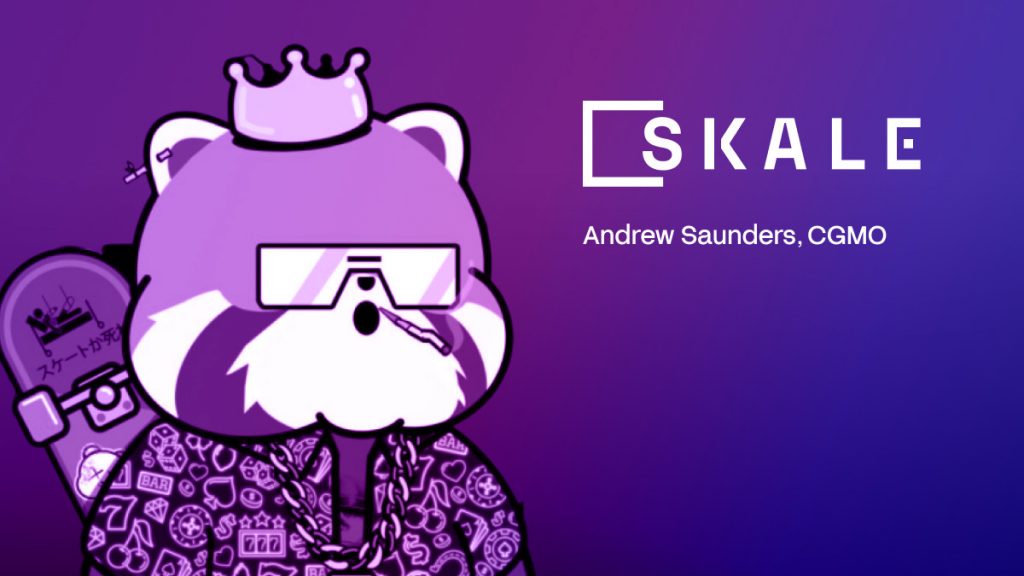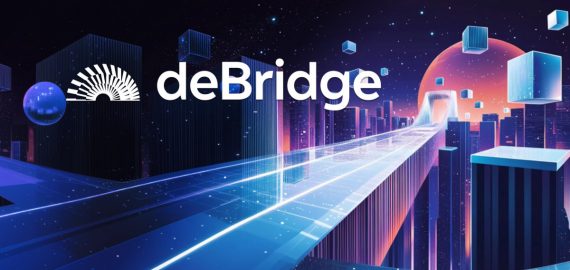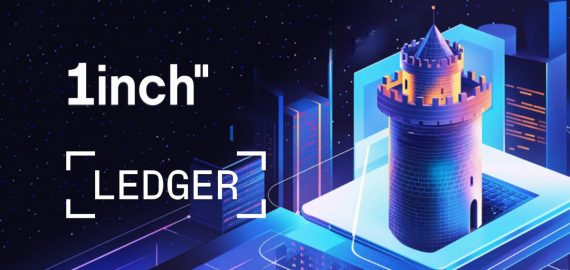How SKALE is Transforming Blockchain with Zero Gas Fees and Unmatched Scalability for the Next Generation of Web3 Applications


In Brief
SKALE is gaining popularity among developers for its fast, efficient blockchain solutions.

With a strong focus on decentralization, high throughput, and zero gas fees, SKALE is quickly becoming a top platform for developers looking for fast and efficient blockchain solutions.
In this interview, we spoke with Andrew Saunders, the Chief Marketing and Growth Officer at SKALE, who brings over 20 years of marketing experience from top-tier companies like Amazon and Creative Artists Agency. Andrew shares his journey from Hollywood to Web3, the innovations driving SKALE’s success, and the exciting future of the platform as it empowers developers, particularly in the gaming industry. He also provides insights into the growing potential of Web3 adoption and what SKALE is doing to be at the forefront of this occasion.
Can you share your journey to Web3?
I’ve been a marketer for about 20 years. I’ve worked with—I’d say—over 250 major brands and probably over 300 artists.
Just to give some background: I’m a former Hollywood guy. I used to represent some of the top 1% of Hollywood talent at Creative Artists Agency, which was, at the time, the leading talent agency in the world. My role there was to bridge Madison Avenue and Silicon Valley.
For major brands like Nike, Apple, and Amazon, I helped leverage entertainment and culture to reach younger consumers who live in different channels and consume media in unique ways. Many traditional brands don’t understand this, and my job was to build that bridge.
When Silicon Valley emerged, much like we see now with crypto, companies realized they could leverage Hollywood and celebrity culture to reach the masses in meaningful ways. Early on, I worked with Facebook and Twitter. For example, I worked with Zuckerberg to help bring celebrities onto Facebook.
In terms of crypto, I’ve always been passionate about emerging technologies. I was early in digital and social media, VR, AR, AI, and machine learning. Blockchain is just a natural extension of that.
I got the crypto “bug” when I realized how blockchain could impact not just finance but so many aspects of life. I’ve been particularly passionate about DeSci for over three years. For example, Big Pharma develops cures based on profitability, but what if people could crowdsource scientists to research cures for less prioritized diseases?
I’m also a Web2 VC, investing in female-founded startups and direct-to-consumer businesses. In emerging industries, infrastructure is usually the most stable area. That’s why I initially joined companies like Arbitrum and Chainlink, eventually becoming Arbitrum’s first CMO.
After working in various verticals and DeFi projects, I joined SKALE as the Chief Marketing and Growth Officer. I had already been advising SKALE and was impressed by its powerful technology, so I decided to join full-time.
Can you elaborate on the specific technical limitations of Ethereum that led to the creation of SKALE’s modular blockchain solution?
If you look at Ethereum, there are well-known limitations, particularly around gas fees. During bull markets, gas fees surge dramatically, and scalability becomes a major issue.
This is where scalability solutions come in. For example, Arbitrum—where I previously worked—is a Layer 2 solution built to solve Ethereum’s scalability issues. But Layer 2 solutions often rely on centralized sequencers, which means they are not truly decentralized.
SKALE is intentionally built differently. It’s not a Layer 2 solution. Instead, it’s a network of Layer 1 chains that leverage Ethereum in unique ways. This means SKALE can offer zero gas fees while maintaining decentralization.
Our architecture provides superior scalability without compromising the decentralization ethos of blockchain technology. It’s one of the key differentiators that make SKALE stand out.
How do you see the current state of Layer 1 and Layer 2 solutions? Who’s winning the market?
Right now, there’s more focus on Layer 1 solutions, and I think that’s the right approach. Layer 2 solutions tend to be centralized, often operating more like Web2 companies because of their centralized sequencers.
Decentralization is one of blockchain’s core values, and SKALE embraces that with its unique Layer 1 architecture. Our focus on decentralization and scalability sets us apart in this competitive market.
SKALE has two types of chains—hub and app chains. Can you explain their benefits, particularly for gaming?
SKALE’s gas-free model works on a subscription basis, like software-as-a-service. Developers rent block space on SKALE chains by paying a subscription fee, which then rewards validators. When it comes to hub chains and app chains, the choice depends on the block space requirements of a decentralized application.
For gaming, a hub chain like Nebula is ideal for smaller games or games that don’t need much block space initially. Multiple games can share the same chain, renting block space together. App chains, on the other hand, are dedicated chains for applications that need more block space.
Why is SKALE so focused on gaming?
Gaming aligns naturally with SKALE’s high-throughput and gas-free architecture. Games generate enormous transaction volumes, and our technology ensures no congestion, lag, or crashes—issues that plague other blockchains during high traffic.
SKALE also eliminates traditional blockchain barriers for users. Gamers don’t have to manage wallets or pay gas fees. For example, you can download games like StrayShot from the Epic Games Store and play without even realizing you’re interacting with blockchain technology.
This frictionless experience has made SKALE a top choice for gaming developers. In fact, SKALE has over 14 games with 10,000 monthly active users, making it the number one gaming chain.
How do you think we can attract more people to Web3?
For me, there are two main types of decentralized applications that have the potential to onboard the masses—gaming and social. I’ve worked with nearly every major game studio, mobile game publisher, and gaming console over the years.
A great example is Stardew Valley, an indie game that became a breakout hit. It onboarded millions of players, and that’s exactly the kind of success we can see more of in Web3.
When I decided which chain to work with, I looked at which one had the best environment for driving mass adoption. Gaming and social are the two areas most likely to see rapid user adoption. When I evaluated the market, SKALE stood out.
The real differentiator for SKALE is that it’s enabling traditional Web2 game studios to experiment with Web3. Many Web2 gaming studios are already building for platforms like PC, console, or mobile, and now they’re interested in adding in-game ownership and economies. This is a huge factor in bringing new users into Web3.
Are there other ways to bring people to Web3 beyond gaming?
When you think about it, the biggest companies in Web2 can also drive massive Web3 adoption. For example, Amazon’s Prime membership has a massive global user base. If Amazon wanted to integrate blockchain technology into Prime, they could do so in a way that’s invisible to the consumer.
Similarly, companies like Activision already have vast amounts of first-party data. They know exactly who their players are, and they could use blockchain technology to add in-game economies and ownership features without any of the friction typically associated with Web3. But, as you can imagine, they’re waiting for regulatory clarity before making that move.
Once that clarity is established, there will be a massive shift from Web2 to Web3, and platforms like SKALE will become the optimal solution for companies looking to integrate blockchain in a seamless, invisible way.
What specific advancements or features does SKALE plan to implement to enhance its scalability and performance in the next few years?
SKALE has always been about providing a high-throughput, scalable, and fair solution. One of the things we focus on is offering zero gas fees, which is a huge advantage for users and developers. But beyond that, we’re constantly working to improve our technology.
For example, we recently had the Pacifica upgrade, which significantly improved performance. And we’re already planning more significant improvements that will make the network even faster and more cost-effective.
SKALE has already been independently verified by Dartmouth University as the fastest blockchain in terms of transactions per second (TPS) and time to finality. Our goal is to make the fastest even faster, so we’re looking at ways to continue optimizing for speed.
Additionally, all SKALE chains are MEV-resistant, which ensures fairness by preventing miners from manipulating transactions for profit. We’re also working on adding MEV resistance in ways that no one else has done before, making SKALE one of the safest blockchain solutions available.
Lastly, we’ve saved users over $9 billion in gas fees compared to other chains. As we continue to grow and scale, we’ll be enhancing the user experience even further by providing more cost savings and removing the friction of gas fees altogether.
Can you elaborate on how SKALE incentivizes developers?
SKALE uses a pooled reward system to incentivize developers. Essentially, validators who secure the network are monitored for their performance, which is based on uptime and latency. Those who perform well collectively share in the monthly pooled rewards.
In addition, we have penalties for malicious actions, like slashing, which ensures that bad actors don’t undermine the network. If someone doesn’t perform up to SKALE’s requirements, their rewards are reduced or removed entirely.
This system creates a strong incentive for developers to ensure their performance is top-notch. As a result, SKALE provides an additional revenue stream for developers on a monthly basis, encouraging them to build and maintain high-quality applications on the platform.
Do you foresee any trends in Web3 that are especially interesting for SKALE to follow?
In terms of driving mass adoption, I think the key trend we’re watching closely is the move from Web2 to Web3. Companies that have been in Web2 for years, like Amazon, are starting to explore blockchain technology. However, the main factor holding them back is regulatory clarity.
For example, Amazon could easily integrate blockchain into its Prime membership, creating a frictionless experience for millions of people. We’re also seeing companies like Activision, with their large game studios and player data, explore the possibilities of Web3. Once regulatory clarity is achieved, I expect a significant influx of Web2 companies into Web3.
At SKALE, we’re positioned to be the platform that Web2 companies turn to for their Web3 needs. We offer the scalability, security, and gas-free experience that’s needed to onboard millions of users.
Can you elaborate on the future of SKALE in terms of partnerships, particularly in gaming or other industries?
One of the things that makes SKALE unique is the background of our leadership team. We have over 60 years of collective experience in Web2. I’ve worked at Amazon and NBC Universal; Jack has built and sold two successful companies in Silicon Valley, and Stan has a history of developing cryptography and the Java Virtual Machine.
This extensive network of relationships makes it easier for us to connect with large companies across industries. We’ve already seen success with companies like Hurley, a major athletic brand, and Stars, a media company, both of which have decided to build on SKALE.
We’ve also partnered with Nolan Bushnell, the founder of Atari and the godfather of traditional gaming, who is building his game on SKALE. In addition, we’re the only chain that has a first-party partnership with Unity, which is a massive deal for game developers using Unity’s engine.
I expect to see even more partnerships with major companies, especially as more Web2 companies look to experiment with Web3.
Disclaimer
In line with the Trust Project guidelines, please note that the information provided on this page is not intended to be and should not be interpreted as legal, tax, investment, financial, or any other form of advice. It is important to only invest what you can afford to lose and to seek independent financial advice if you have any doubts. For further information, we suggest referring to the terms and conditions as well as the help and support pages provided by the issuer or advertiser. MetaversePost is committed to accurate, unbiased reporting, but market conditions are subject to change without notice.
About The Author
Victoria is a writer on a variety of technology topics including Web3.0, AI and cryptocurrencies. Her extensive experience allows her to write insightful articles for the wider audience.
More articles

Victoria is a writer on a variety of technology topics including Web3.0, AI and cryptocurrencies. Her extensive experience allows her to write insightful articles for the wider audience.

















































